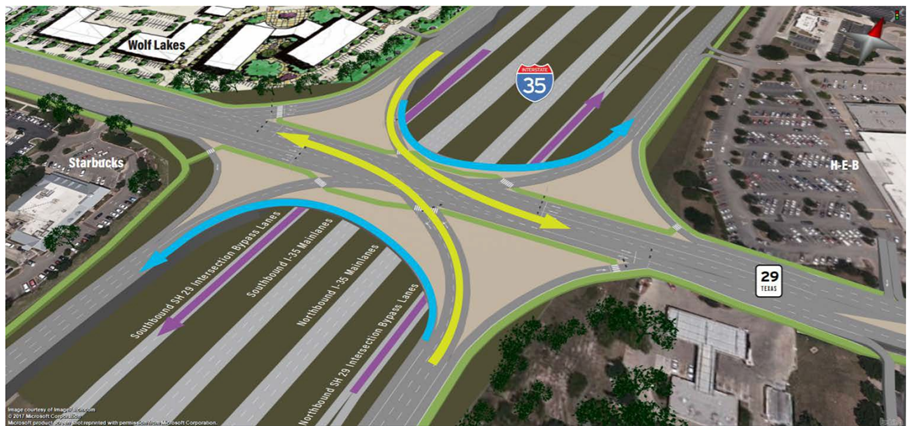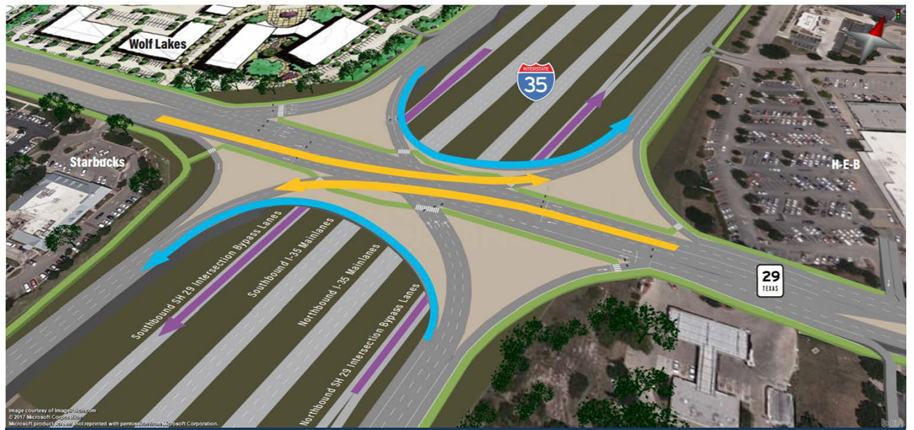Section 3: Single-Point Urban Interchange Factsheet
Single-Point Urban Interchange
A SPUI is an intersection design that allows a large volume of vehicles to travel through the intersection safely and efficiently by reducing conflict points and the number of traffic signal phases. Similar to a DDI, the SPUI allows opposing left turns to proceed simultaneously. Unlike a DDI, streams of left-turning traffic in a SPUI do not cross. Opposing left turns can be made at the same time; with only one set of traffic signals, allowing more vehicles to clear the intersection in one traffic signal cycle.
Benefits
The benefits of a SPUI include:
- Improving safety: With only one signalized intersection rather than two at a conventional diamond interchange, vehicles only cross paths at one location.
- Improving travel time: Additional “green time” at traffic signals allows more vehicles to pass through the intersection.
- Wider turns for large vehicles.
- Reduced right-of-way requirements.
Driving a Single Point Urban Interchange
A SPUI operates with a single, three-phase traffic signal:

The first phase involves cross street traffic traveling through the intersection.

The second movement involves opposing left-turn lanes from the frontage road and/or exit traveling through the traffic signal onto the cross street.

The last movement is for the second set of opposing left-turn lanes traveling from the cross street onto the frontage road. Through-traffic on the frontage road is handled via